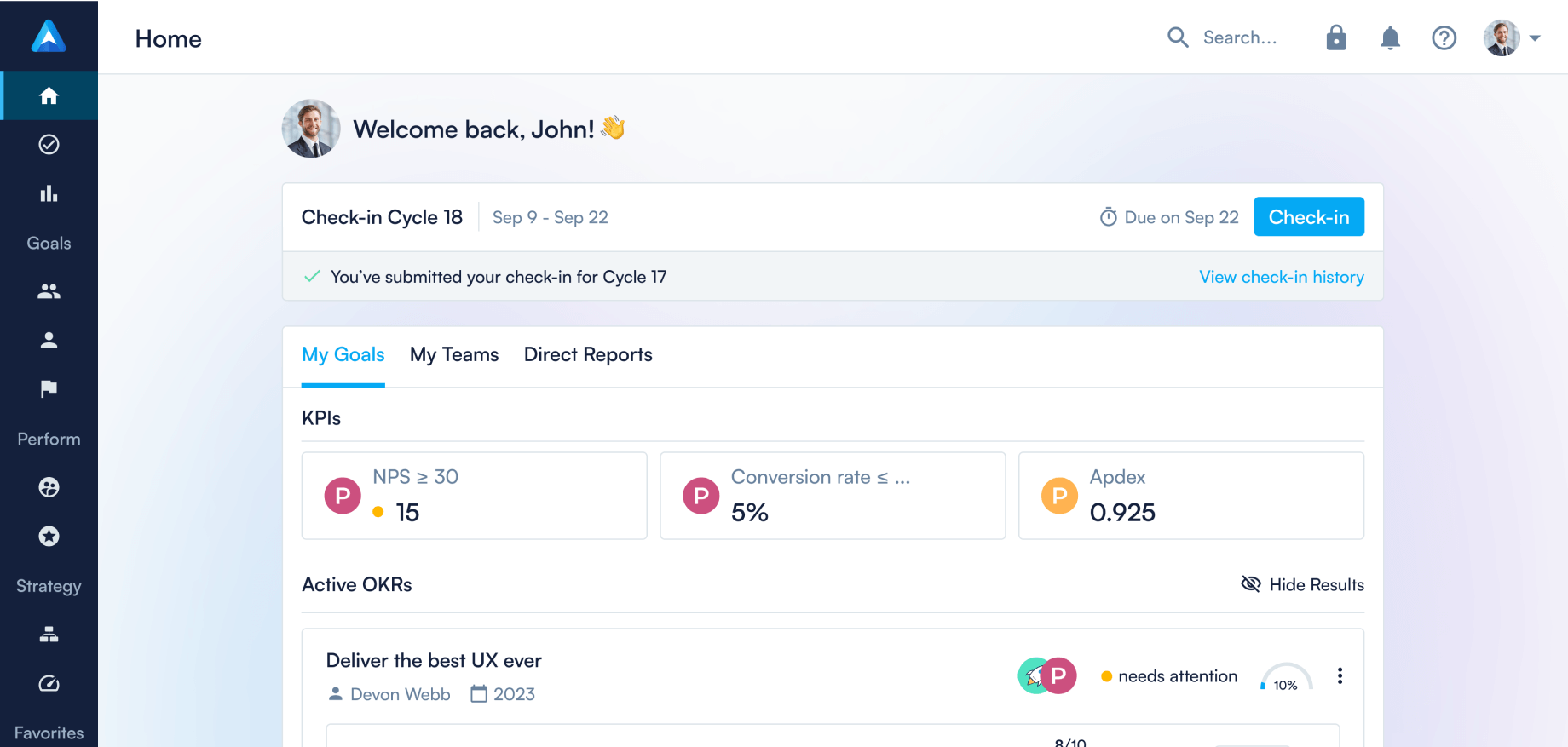
How teams can make the best use of their time

We all know the saying “time is money,” but unlike money, there is no way to earn back time. Every minute that passes is gone forever, which is why you should spend time wisely.
How teams spend their time will make or break the company. So what can teams do to make the best use of their time? To answer that question, we first need to get a good understanding of what teams spend time on.
What impacts a team’s bandwidth?
Everything a team spends time on falls into 3 categories:
Let’s zoom in on each category:
OKRs
OKRs cover everything your team wants to build, optimize, or innovate. They are what helps you get out of the status quo and move forward.
Example: when we started investing in customer success at Perdoo, we decided to first build a solid onboarding program for new customers. Our Coaching Team created an Objective for Q1 2017 to Create an awesome onboarding experience for new customers.
To learn more about this category, read our article about the 3 things that you can accomplish with an Objective. For more examples like the one above, download our free guide Example OKRs for Customer Service.
Business as usual
In contrast to OKR, which help you break out of the status quo, Business as usual is everything you need to do to maintain your key business areas on an ongoing basis.
Example: after our Coaching Team established an amazing onboarding experience for new customers, we expected them to continue delivering this great onboarding experience to our customers. It wasn’t reflected in their OKRs anymore since there was no reason to build a new onboarding experience nor to optimize or innovate the existing one. Delivering a great onboarding experience became business as usual.
Note: not all your completed Group OKRs become business as usual, plenty of them will be one-offs.
Other
Things like company events (e.g. town hall and all-hands meetings), 1on1s and performance appraisals, and ad-hoc requests from superiors or other teams neither fall into the OKR nor the business-as-usual category. These things are unavoidable, but they don’t necessarily help the company or team get things done.
The time a team gets to spend working on OKRs is the time the team will spend to help the business move forward. It is tempting to think that, every quarter, a team has a fixed amount available to work on OKRs. That is, however, not the case.
Time available for OKRs changes over time
To keep it simple, I’m going to assume the following:
- A team will always spend a certain amount of time in the Other category. It’s important for teams to attend company events, invest in the personal development of team members, and so on. I think it would be wise for teams to budget around 10% of their time for this.
- The amount of people within the team remains the same. As new people join or leave the team, the total time capacity of that team changes.
Having that said, let’s have a look at a team that is still young, such as Perdoo’s Customer Success team that was newly created in Q1 2017. Because the team was brand new, it didn’t have much business as usual to take care of, which means it had almost all their time available to work on OKRs.
Going back to our previous example, our Customer Success team decided to first build an awesome onboarding experience for new customers and created an OKR for that in Q1. Doing this from scratch is of course quite difficult. It takes trial and error until you’ve figured out the right onboarding experience for customers (and you know it’s the right experience by looking at the Key Results).
Once you’ve figured it out, you probably want to continue delivering this great onboarding experience to customers, which means it becomes business-as-usual from Q2 onwards. That means the Customer Success team has less time available to work on OKRs in Q2, than they had in Q1.
Know how much time you have for OKRs
When you create OKRs with your team, it is crucial to estimate how much time you actually have available to work on those OKRs. When you create OKRs pretending your team has a 100% of their time available to work on them, you risk burning out your team and you can be quite sure that at least some of your OKRs won’t be achieved by the end of the quarter.
On the other hand, it's the teams who essentially drive the Company OKRs. In other words: it's the teams who are responsible for executing and implementing the organization’s strategy. Hence it is crucial that your team makes at least a considerable amount of time available to work on OKRs.
If you have no time available for OKRs, you may want to review your business as usual: does everything still makes sense? Is there some work that we should stop doing? Some businesses and job positions obviously have a lot more business as usual than others. I can imagine that in a chain of restaurants, for a large number of employees most of their time will be spent carrying out fairly repetitive tasks.
Once you have a good feeling for how much time your team has available to work on OKRs, you can start thinking how best to spend that time. Look at the Company OKRs and ask yourself the question: what should we build, improve, or innovate this quarter that will support the Company OKRs?
FAQ







